Prior to the industrial revolution, woodlands were the factories of the English landscape. They supplied firewood and charcoal, timber for construction and joinery, food and medicinal products. Most woods were hives of productive human activity. And yet we now view them as static environments that should remain untouched and preserved with only the long term goal of maintaining them as closed-canopy assemblages of veteran trees. Not only is such a woodland unproductive it is also an environment of limited biodiversity.
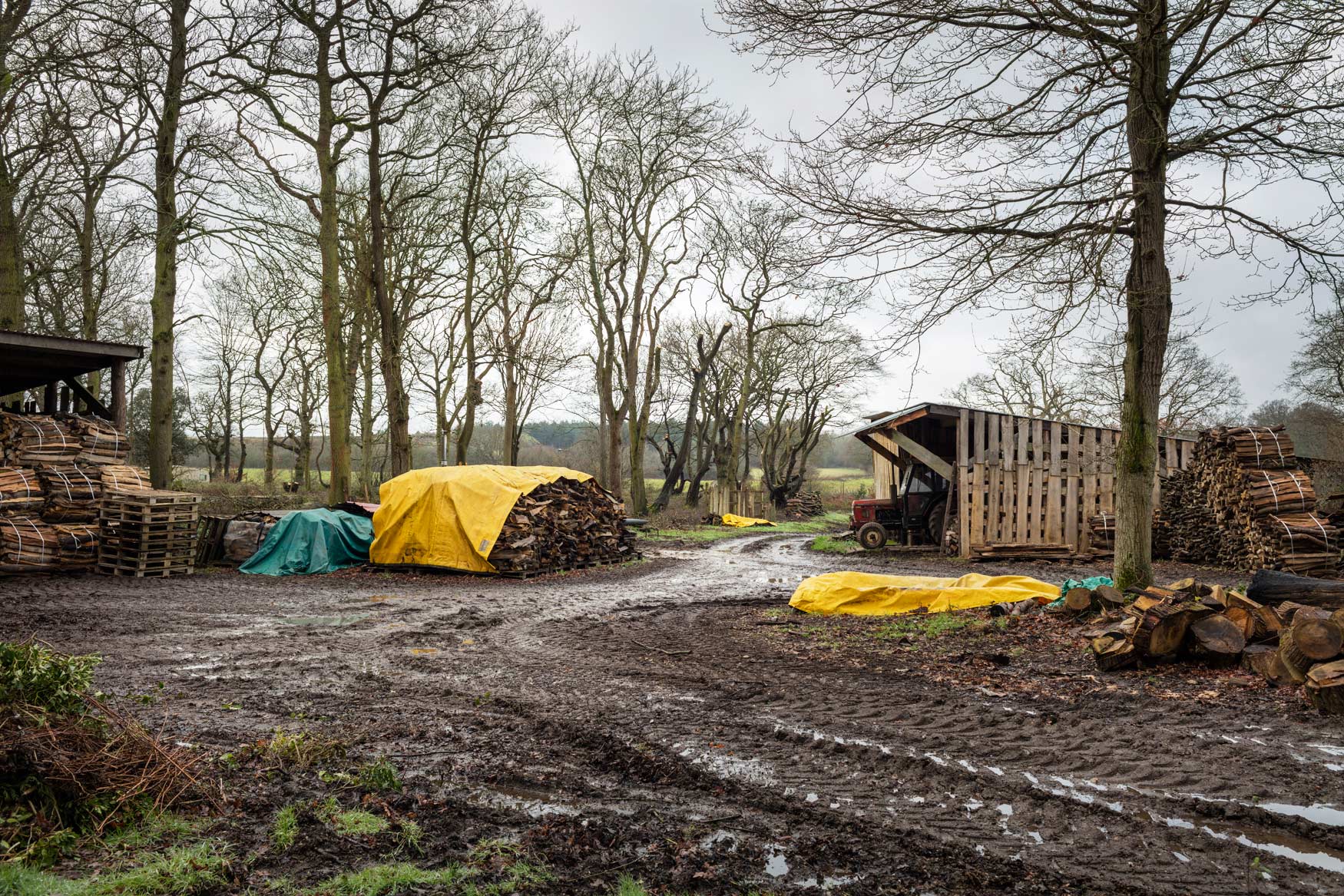
Woodland life thrives in open glades, dense understoreys, ancient coppiced tree stools, rotting trunks, woodland ponds and margins. And these are habitats created by utilisation and disturbance, which promote ecosystem succession and dynamic environments.
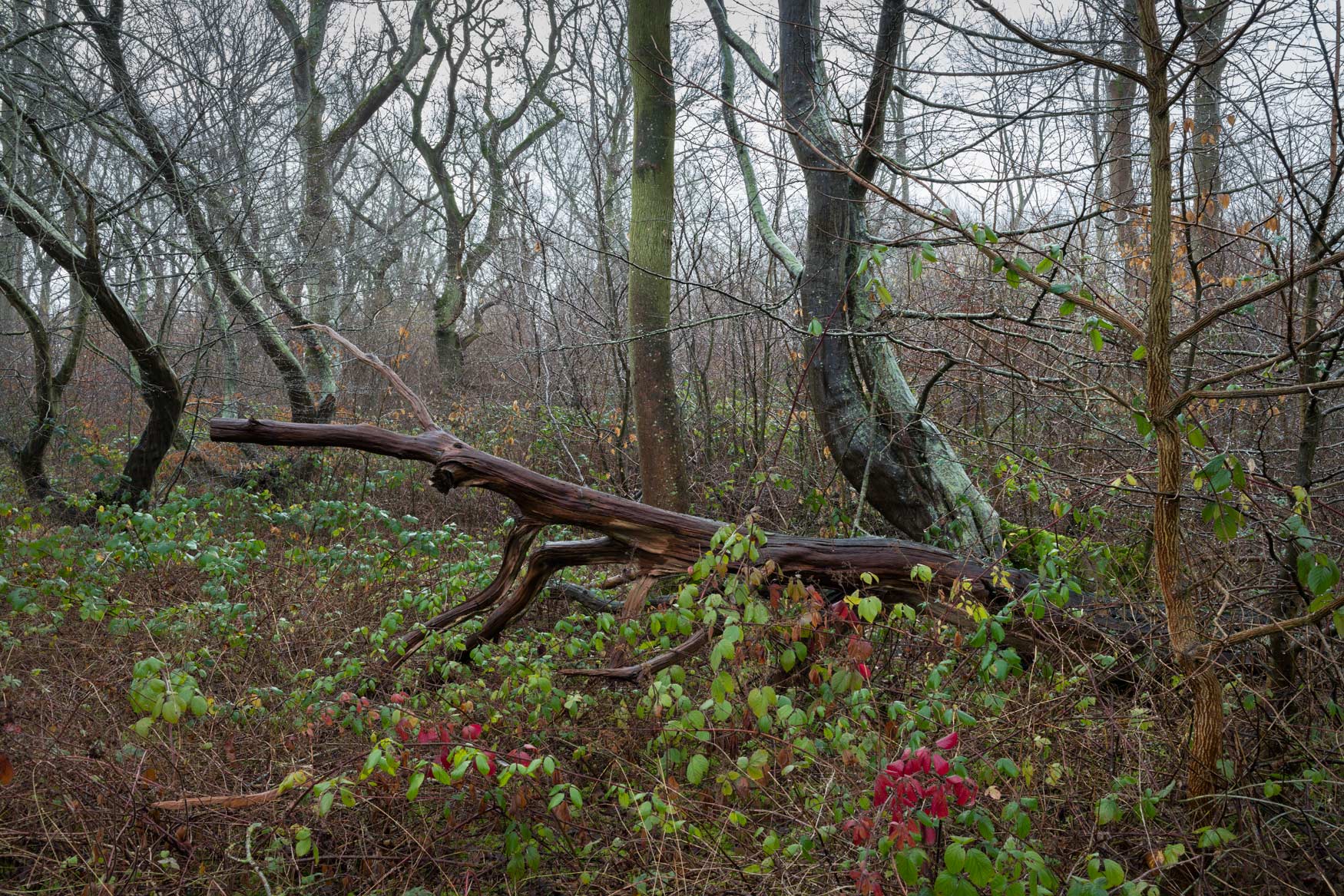
Crispin Chalker has owned his 50 acres of woodland, composed of ‘Big Wood’ and ‘Common Wood’ in North East Suffolk for 12 years, and has continued the process of woodland management and utilisation that continued on the site for hundreds of years but had been neglected in recent decades.
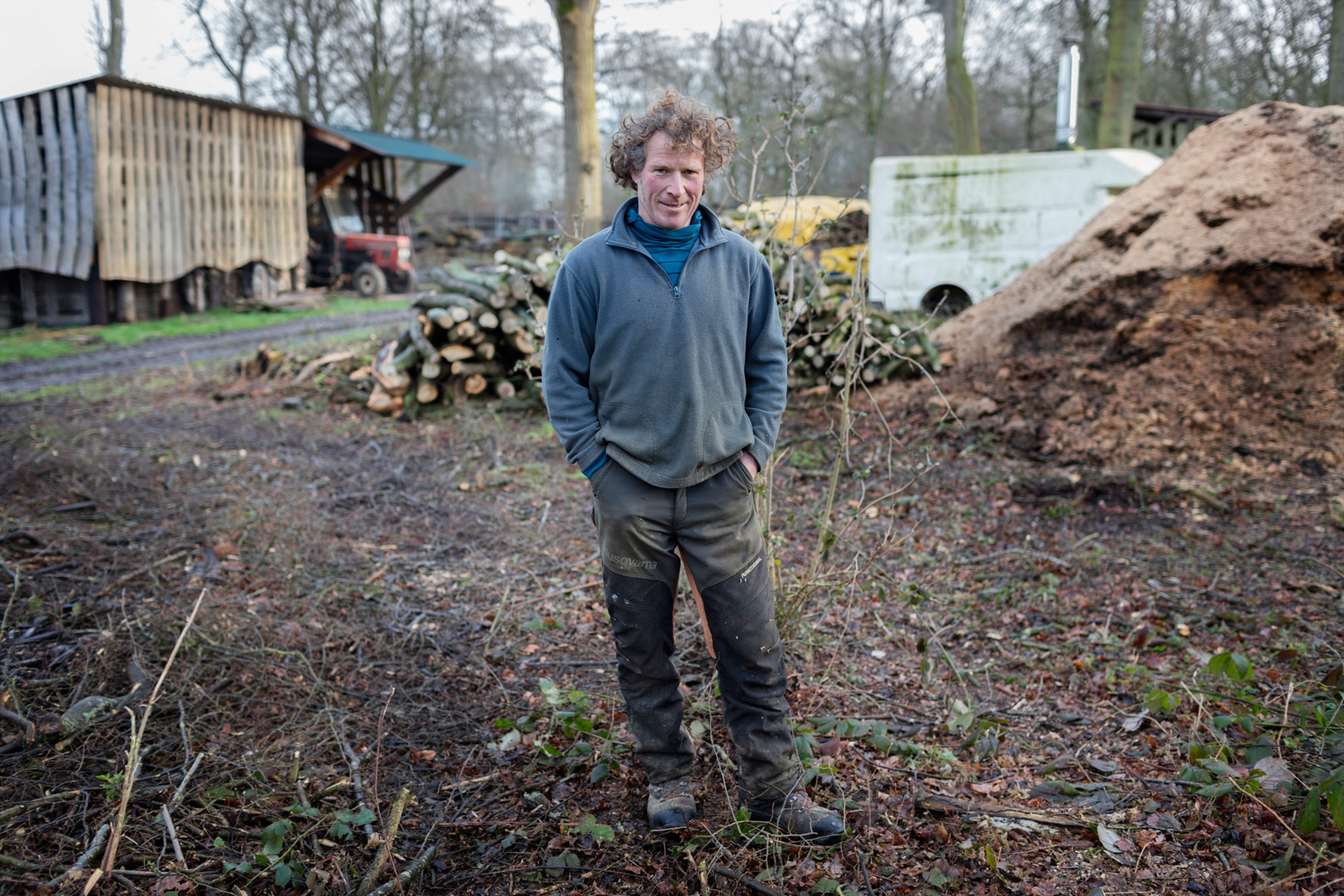
One of the first challenges he dealt with was the over-population of deer. In the UK we now have 4 species of introduced deer to add to our 2 native species and with minimal control in the Suffolk countryside the populations have exploded. And deer love to nibble young tree shoots. When Crispin took over the woods there was no understorey and no saplings. Given the intense browsing pressure at the time he made the decision to ring-fence the whole plot.
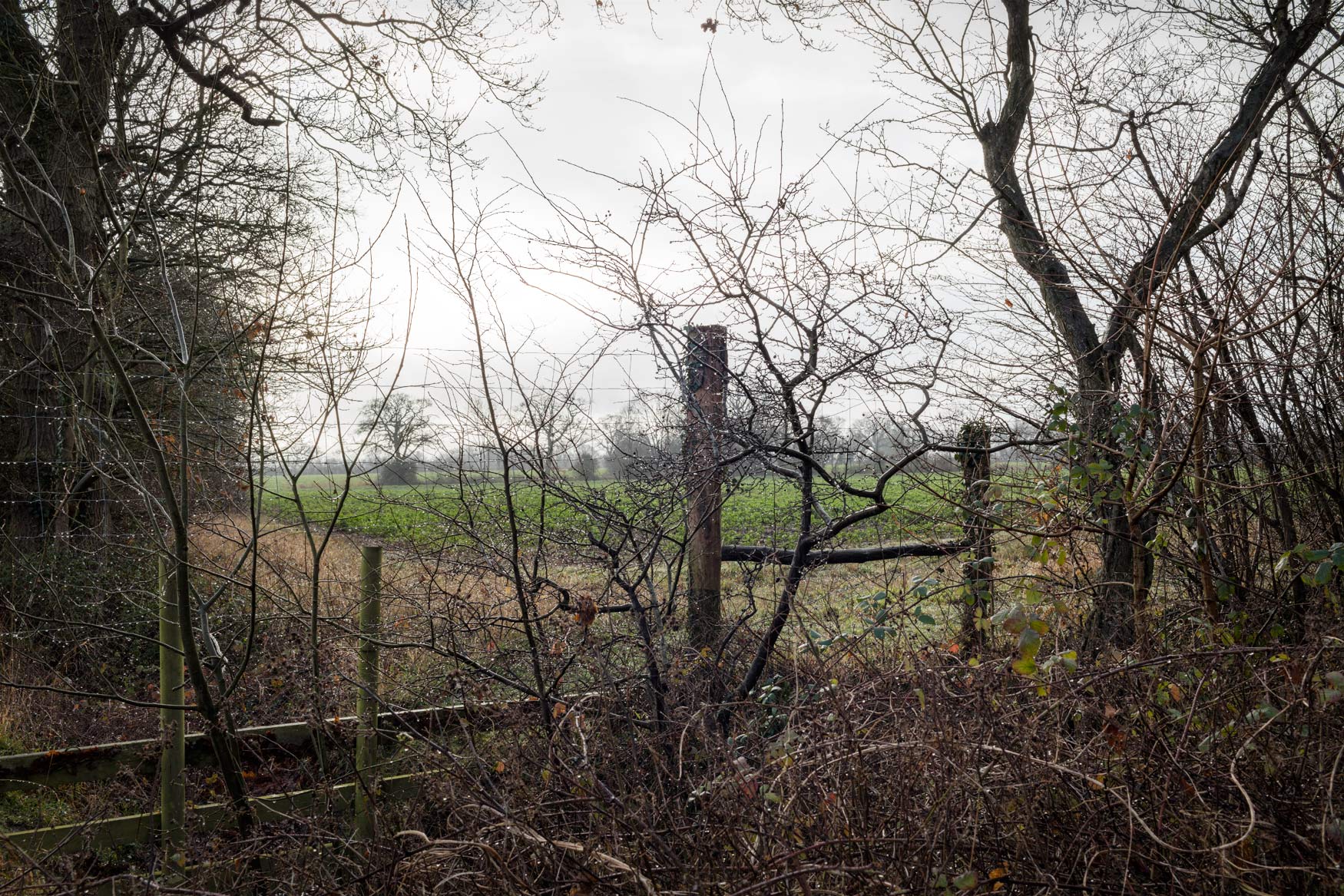
He then set about clearing and opening a network of paths, known as rides, through the woods to provide access and improve light penetration. He has also selectively thinned plots, known as coups in woodland management, always aiming to promote coppice growth. These activities alone have provided over a decade of saleable firewood, the current main source of income from the woods (standing and fallen dead trees are usually left to provide additional habitats for wildlife) He has his own sawmill on site for the production of timber, and creates a variety of artisanal woodland products himself.
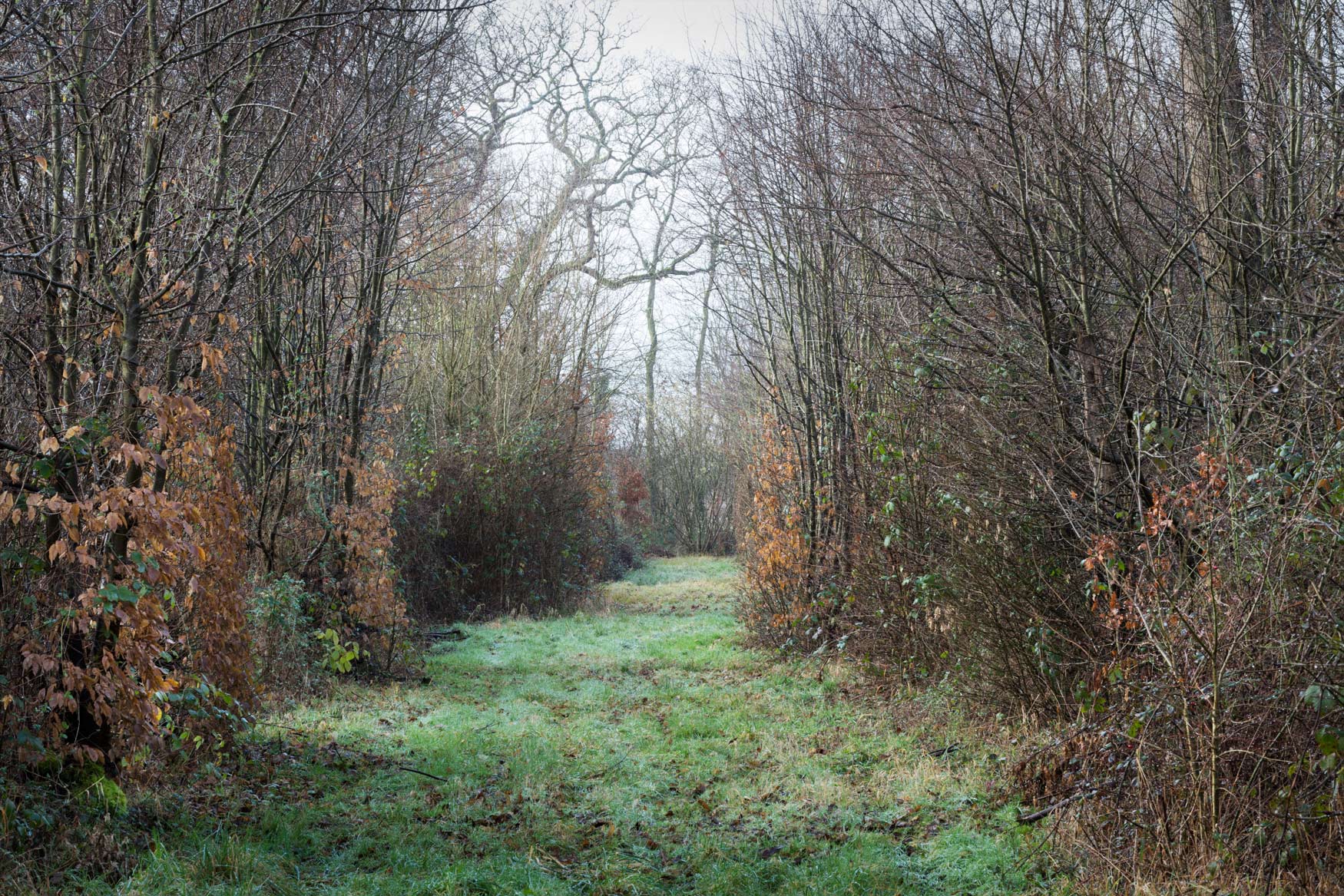
Crispin says the decision to exclude deer is one that can be revisited once the woods have established a good range of developing coups. But with no natural predators it will probably be necessary to allow controlled culling to limit the population. Personally I’d love to see the fences used to retain some pigs or boar to rootle around in the undergrowth as well! If the fences were lowered, both pork and venison could be a valuable extra resource.
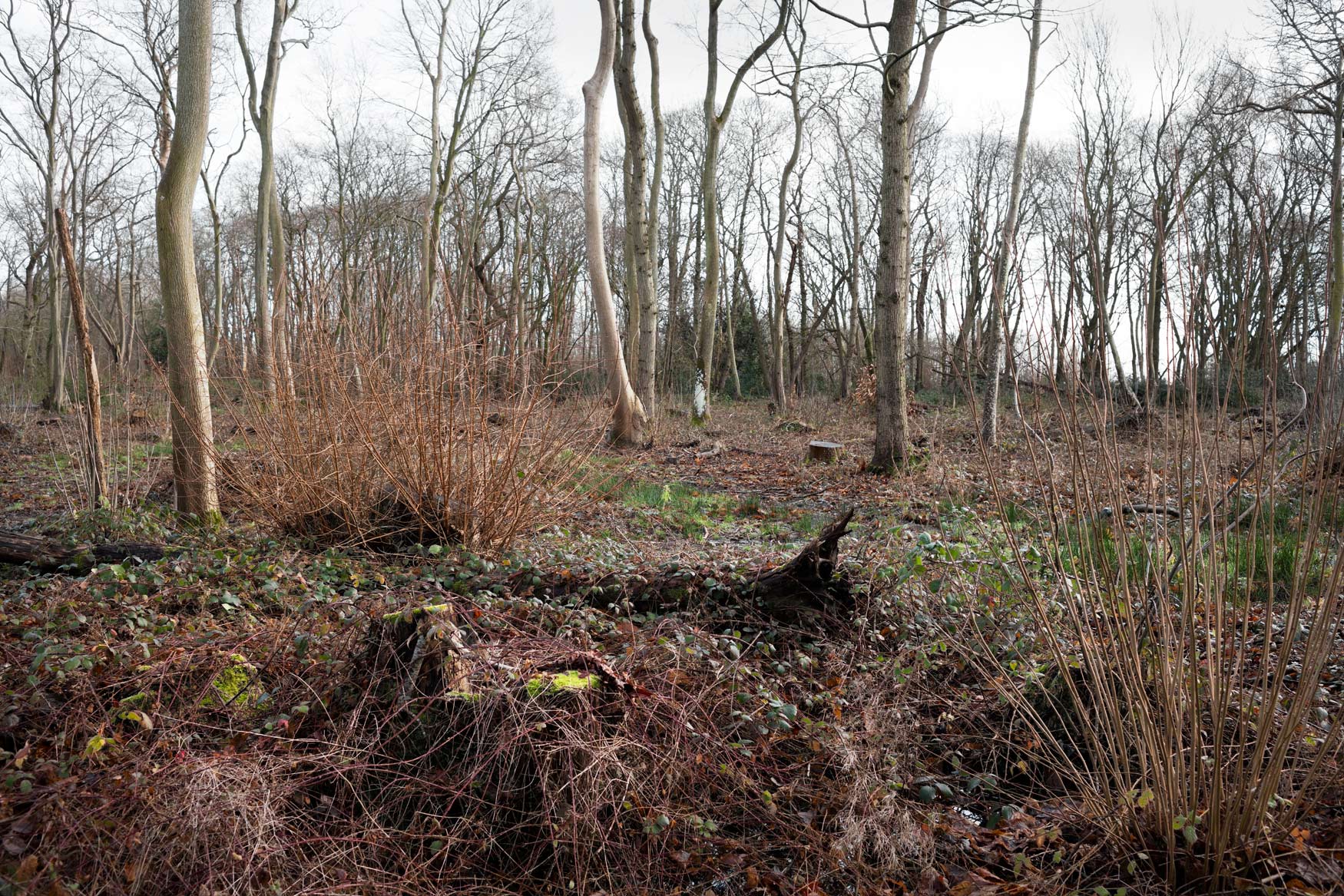
A developing coup after harvesting, with new pollard growth showing
Crispin works with Forest Research to monitor and study the many invasive pests and pathogens that threaten our trees. He explained that in the whole of the 20th century there were 5 significant new tree infections identified, whereas in the 21st century there have already been 20 new arrivals. He’s currently monitoring Acute Oak Decline, various Armallaria (the innocuously-named honey fungus) and Ash Dieback, to name just a few. He believes that Bio-Security is still an issue that is not taken sufficiently seriously. The threats that it pose have grown exponentially, hand-in-hand with globalisation. And don’t get him started on the destructive grey squirrels (which, of course, are also not a native species)
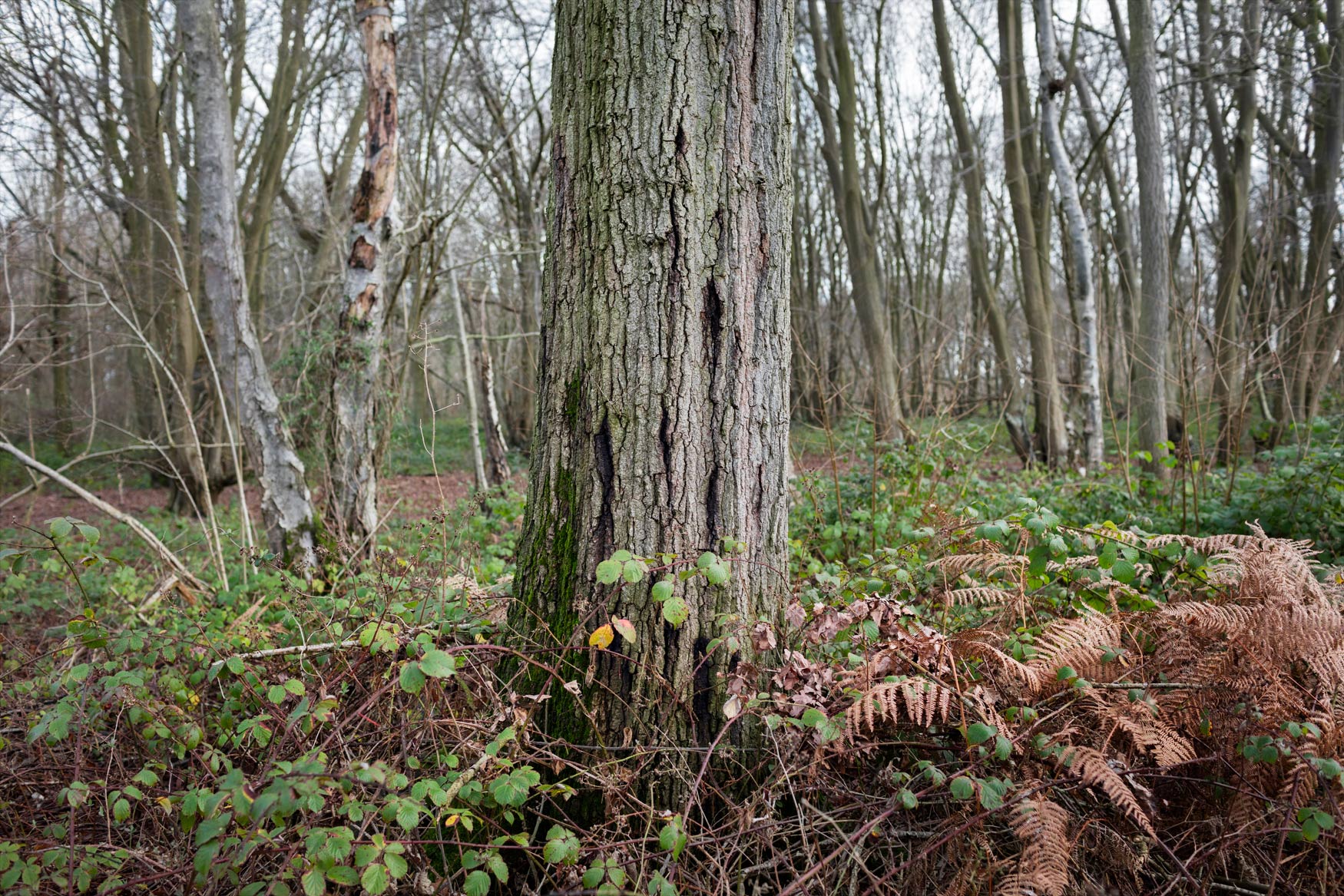
The distinctive black weeping fissures of Acute Oak Decline
While his wood may have some elderly coppiced stools, it is not rich in veteran maiden trees, and one of Crispin’s tasks is to select candidates for the veteran trees of the future. These will be healthy trees in good positions that have not already grown too ‘leggy’. They will need space around and plenty of light. Of course, the ultimate result of this labour is something Crispin will never see himself because, like much woodland management, it is something done for the benefit of future generations. As the old Greek proverb goes 'A society grows great when old men plant trees whose shade they know they shall never sit in.'
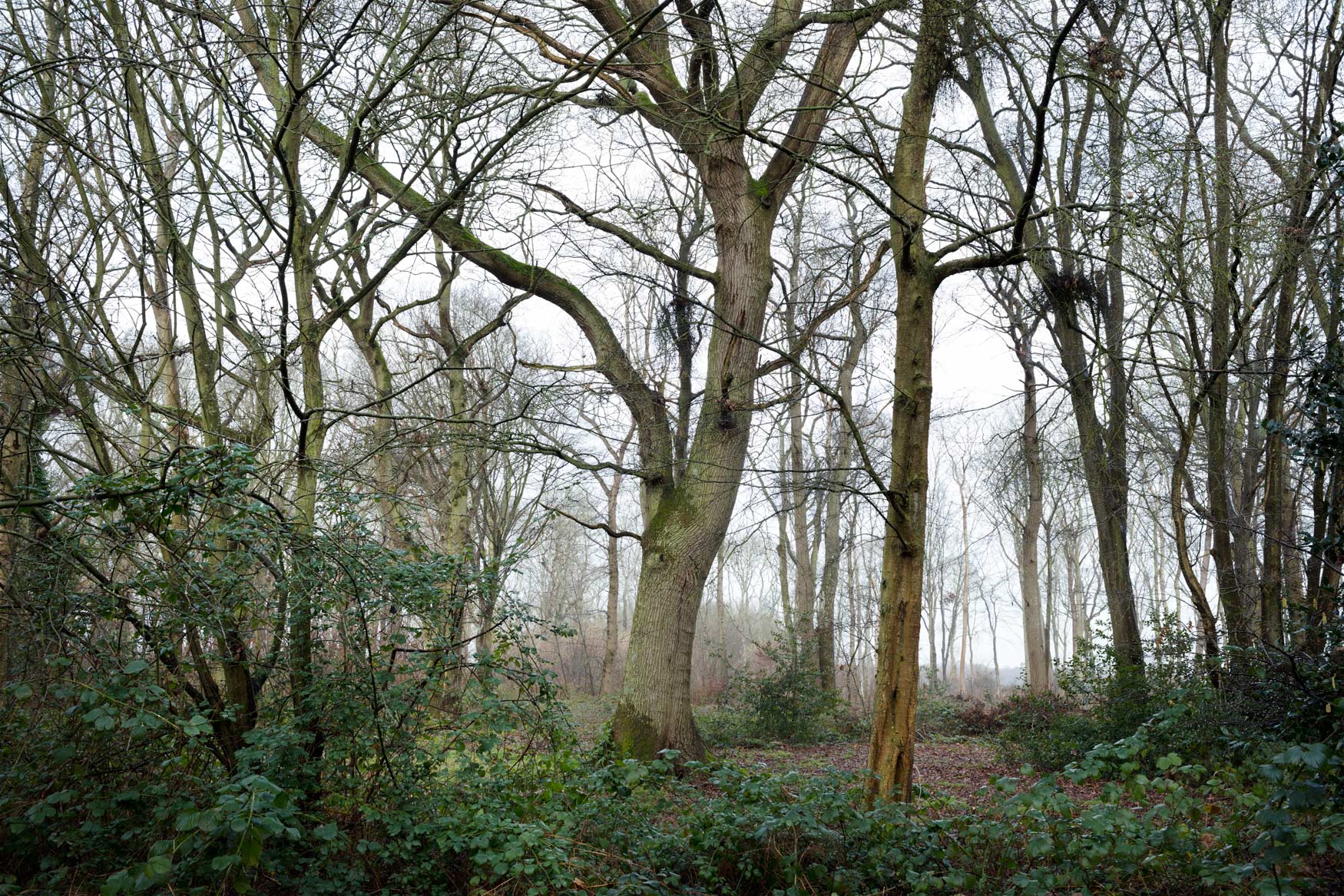
At 120 years, Crispin's oldest Maiden Oak
And as Crispin Chalker himself says, ‘If I took this business plan to the Dragon’s Den I’d be laughed out of the building’.